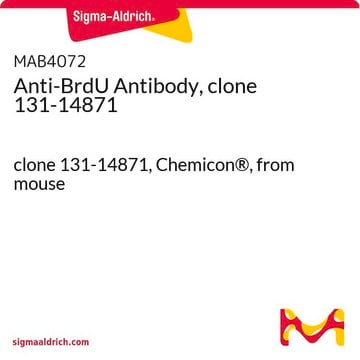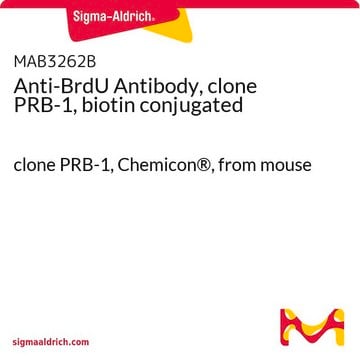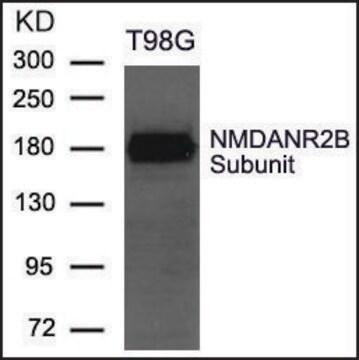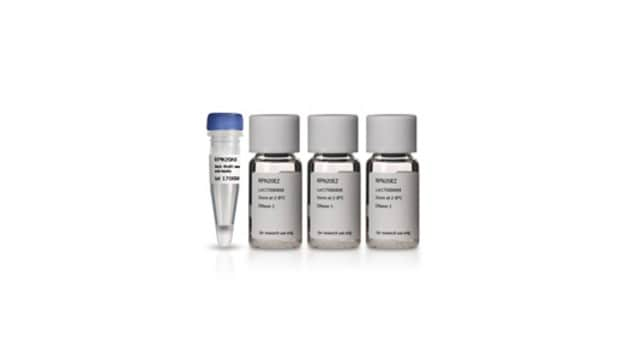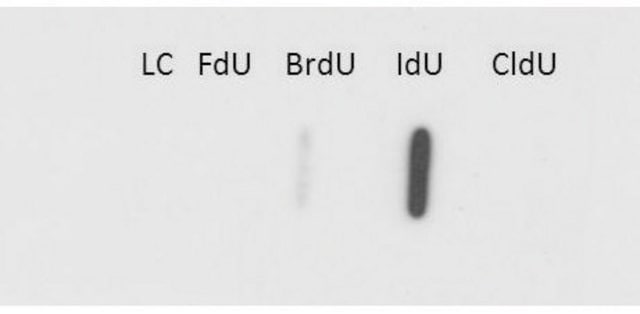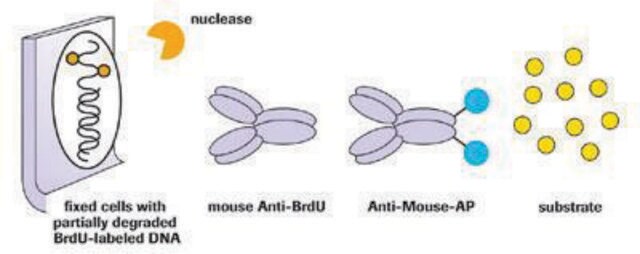11170376001
Roche
Anti-Bromodeoxyuridine
from mouse IgG1 (clone: BMC9318)
Sinónimos:
anti-BrdU, antibody
About This Item
Productos recomendados
biological source
mouse
Quality Level
conjugate
unconjugated
antibody form
purified immunoglobulin
antibody product type
primary antibodies
clone
BMC9318, monoclonal
assay
90% (HPLC and SDS-PAGE)
form
solution
packaging
pkg of 50 μg (500 μl)
manufacturer/tradename
Roche
isotype
IgG1
storage temp.
−20°C
General description
Specificity
Immunogen
Application
- Flow cytometry
- Immunohistocytochemistry
- Cryosections
- Paraffin sections
Quality
Specifications
No. of tests: 250 (Flow cytometry)
Physical form
Preparation Note
Working concentration of conjugate depends on application and substrate. Dilutions should be made in PBS (pH 7.4) containing 0.1% BSA to maintain stability of the antibody.
Analysis Note
No cross reaction to any endogenous thymidine or uridine.
Cross reactivity with 5-Br-UTP has not been tested but it is suggested that there is a good chance for reaction, because the only difference is an absent hydroxyl group on the ribose distal to the bromine substitution.
Other Notes
Not finding the right product?
Try our Herramienta de selección de productos.
Storage Class
12 - Non Combustible Liquids
wgk_germany
nwg
flash_point_f
No data available
flash_point_c
No data available
Certificados de análisis (COA)
Busque Certificados de análisis (COA) introduciendo el número de lote del producto. Los números de lote se encuentran en la etiqueta del producto después de las palabras «Lot» o «Batch»
¿Ya tiene este producto?
Encuentre la documentación para los productos que ha comprado recientemente en la Biblioteca de documentos.
Los clientes también vieron
Nuestro equipo de científicos tiene experiencia en todas las áreas de investigación: Ciencias de la vida, Ciencia de los materiales, Síntesis química, Cromatografía, Analítica y muchas otras.
Póngase en contacto con el Servicio técnico


